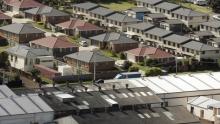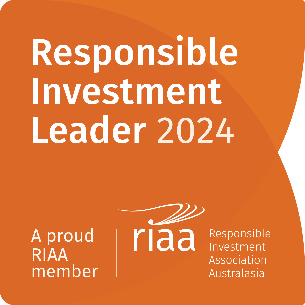NZ Housing Market – Correction or Crash

It appears very likely that the New Zealand housing market will turn down – the question now is whether it will be a correction or a crash?
In the decade since the GFC, most asset prices have risen strongly. The actions of global central banks in cutting interest rates to historical lows and printing vast amounts of money have resulted in solid global economic growth, but the availability of very cheap money has also driven the prices of shares, bonds and residential property to record levels. In recent months though we have seen the return of volatility, and the confidence levels of investors, businesses and consumers are being tested. Notwithstanding the dramatic changes that we saw across equity markets during October, some of the more concerning data points that we have observed recently are in relation to residential property. Recent data shows that property prices are now falling sharply in many cities including in Sydney, Melbourne, London, New York and Vancouver.
Here in New Zealand, the challenges around our housing market are well documented and broadly understood. A combination of strong immigration and our Reserve Bank cutting the overnight cash rate from 8.25 per cent in June 2008 to where it sits today at 1.75 per cent, has resulted in massive price inflation and excessive gearing (household debt to income has risen to 166 per cent in 2018, well above the average since 1991 of 124 per cent). The risks inherent in this scenario are significant. The difficulty for economic forecasters and commentators though has been in identifying when this cycle would end. This is the case with all asset bubbles.
One of the best reference points for us to use in understanding the possible scenarios for New Zealand is the state of the Australian housing market. Historically Auckland follows behind Sydney by about 12-18 months and their property market is currently falling sharply. The latest Sydney residential price index data, for the June 2018 quarter, shows that prices have now fallen for four consecutive quarters and over the past 12-months the official median price is lower by almost 6 per cent. More anecdotally, many property prices are off by 10-15 per cent and are still falling. There are a range of factors which have influenced this dynamic. During 2017, both State and Federal governments implemented policies which were targeted at foreign ownership of residential property. These included lifting stamp duties and land tax surcharges for foreign buyers, and national guidelines were introduced which capped the overseas ownership of new residential developments. These changes coincided with a tougher approach being taken by the Australian financial regulator (APRA) towards bank lending standards. In particular there was a focus on interest-only loans and a more conservative approach being taken by the Banks towards mortgage serviceability. This combination of credit controls and policies targeted towards foreign buyers appear to have been the catalysts for the property downturn now evident in Australia.
Unfortunately the negative momentum across the Tasman appears to be accelerating. Recent auction clearance rates in Sydney have collapsed and during October traded towards levels last seen in the GFC (in the 30 per cent range). In fact, there are only a few examples in recent history where the number of homes transacting at auction have been close to these levels. We saw comparable outcomes in NSW in 2004, after vendor stamp duty was introduced, and then back in 1989 when the cash rate was 17 per cent. Today the cost of capital is clearly much lower, but due to the massive price inflation in property values since 2010, the monthly mortgage commitment for borrowers is higher today than it was back then, due to the average loan size being estimated at 30 per cent higher. And this is where the scenario in Australia, and the developed world for that matter, becomes increasingly fragile. What happens if interest rates reprice to more traditional levels? The standard variable rate in NSW today is essentially 5 per cent, whereas back in 2010 it was closer to 7.8 per cent. These mortgage rates are priced off a record low cash rate set by the Reserve Bank of Australia but their Governor, Philip Lowe, has recently highlighted the need for borrowers to prepare for rate hikes. With long-dated bond yields around the world recently pushing higher on inflation concerns this tightening of conditions is not unique to Australia.
And so what does this mean for New Zealand? Our economy has leveraged significantly off the buoyant conditions that have been evident in our property market since the GFC. The positive contributions made to consumer and business confidence and consequently to hiring intentions and capital investment decisions have been clear. But the risks that exist across our system to any reversal in this key driver are also painfully obvious. It was recently concluded in an Oxford Economics report that, in their opinion, the New Zealand housing market is the fifth most at-risk among OECD nations (a function of pricing, duration of the housing boom, levels of household debt and share of floating debt) and that our housing stock was only superseded by Hong Kong in terms of its over-valuation. With our household debt to GDP now sitting at 92 per cent we are therefore highly sensitive to any Sydney-like downturn.
The challenge, however, is not in simply recognising that excess exists but rather in identifying when the inflection point in this cycle will occur. What is particularly concerning today is that these potential trigger points are not only evident but numerous. The first possible catalyst is the recent introduction of a foreign buyer ban by the Coalition Government. This policy has been implemented at a time when Chinese regulations have also strengthened to limit people’s ability to get money out of China which appears to have had an impact on property markets around the Pacific Rim. In New Zealand we are also seeing a softening in net immigration. It is also likely that the property investors, who in Auckland last year bought over 45 per cent of homes sold, will be impacted by tax changes from April 2019 (the removal of the tax deductibility of negative gearing) and the spectre of a full capital gains tax will remain a threat until after the 2020 elections.
The influence of these headwinds will undoubtedly be compounded by a deterioration in domestic financial conditions. The primary source of New Zealand mortgage funding is the banks, and their Australian parent companies are all nervously awaiting the final submission of the Royal Commission into Misconduct in the Banking, Superannuation and Financial Services Industry in February 2019. It is widely assumed that a major consequence of this review will be a further reduction in available credit through a tightening of underwriting standards. Although this is specific to Australia, it would be unusual for their New Zealand subsidiaries not to be impacted.
It is incredible to think that 10-years have passed since the GFC. All asset classes were hit, including property. The recovery since, on the back of historically low interest rates and money printing, has been similarly incredible. With this recovery has come negative consequences, including a repricing of residential homes to a level now unaffordable for many. With the Auckland market in particular now being regarded as one of the most expensive in the world relative to income levels, it is no surprise that the New Zealand Coalition Government has looked to intervene. Supply-side strategies are being represented by initiatives such as KiwiBuild and demand is being tempered with policies such as the ban on foreign buyers. But this will be a very difficult path to navigate. With the global economic cycle showing evidence of maturity, interest rates beginning to rise and the regulatory environment negatively impacting the availability of credit, it appears very likely that the New Zealand housing market will fall. The big question is by how much.





